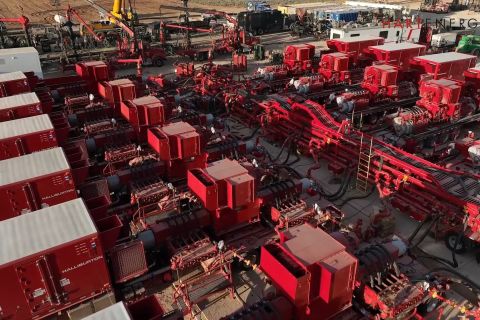In a turbulent, recessionary market, most investors have grown more cautious, if not outright skeptical, of corporate performance. The domestic exploration and production stocks have been remarkably resilient, however. While the Standard & Poor's 500 has slid more than 25% year-to-date, and the Dow has crumbled even more dramatically, E&P stocks have been relatively flat-which in today's world, means they are far outperforming the overall market! (See chart.) Surging natural gas and oil prices have been a substantial reason, but savvy investors have hesitated to arbitrarily reward the whole group. Instead, they have paid a premium for E&P companies that have been able to manage their debt, maintain tight balance sheets and execute focused production growth plans. Additionally, The Street has rewarded companies with strong leverage to North American natural gas, especially those companies that have completed acquisitions giving them dominant positions in that arena. Investors have punished companies that have failed to manage their debt adequately, failed to increase production volumes, or failed to provide a clear indication of how they will grow oil and gas output in the near term. Companies tied to too few plays also are viewed skeptically. The winners The best performers in 2002 have been those E&P companies that have maintained a strict capital discipline (as measured by the ratio of debt to thousand cubic feet of gas production). Also rewarded are companies that have demonstrated strong development opportunities to The Street. In 2002, investors favored companies that were able to expand their production profiles through mergers and the companies which were well positioned to benefit from the 43% rise in the natural gas price in 2002. Investors consistently looked for disciplined management and balance sheet strength across the E&P market-capitalization spectrum. However, investors approached production profiles differently for the varying market values of the E&Ps. For larger caps, due to the breadth of properties they hold, investors tended to focus on the total production profile. In general, investors examining the midcaps needed a more defined story in terms of short- to mid-term production ramp ups, while small-cap performance was almost exclusively property-by-property driven. Investors rewarded firms such as Devon Energy, which is highly leveraged to gas and has paid down more than $1 billion of merger-related debt. They also rewarded Apache Corp., which has announced a string of Egyptian discoveries, and the newly minted Encana Corp. of Calgary (now North America's largest independent). Attention was given to Pioneer Natural Resources and Encore Acquisition for their solid production profiles, consistent with largely manageable debt loads. And the losers Just as astute and demanding investors rewarded companies that have added to prospect and production inventories, they punished those that have not inspired faith in their production capabilities moving forward, or those currently involved in merger activity. Anadarko Petroleum, historically a market outperformer, has been punished as a result of its lower estimates for production growth in 2002 and a general feeling that its production profile is not as glamorous as in the past. Weaker or unclear production forecasts for upcoming quarters have impacted other E&P companies, especially in the mid- and small-cap sectors where the companies can't benefit from a diversified portfolio of production. Swift Energy, Tom Brown Inc. and Forest Oil are among these names. Vintage was hurt for its ties to Argentina, which is in turmoil, and its debt load. -Ian Synnott, Matthew Beck and Tate Sullivan are energy consultants for Thomson Financial Corporate Group, New York, thomsonfinancialcarson.com, 646-822-6384.
Recommended Reading
CERAWeek: Large Language Models Fuel Industry-wide Productivity
2024-03-21 - AI experts promote the generative advantage of using AI to handle busywork while people focus on innovations.
Cyber-informed Engineering Can Fortify OT Security
2024-03-12 - Ransomware is still a top threat in cybersecurity even as hacktivist attacks trend up, and the oil and gas sector must address both to maintain operational security.
Exclusive: Halliburton’s Frac Automation Roadmap
2024-03-06 - In this Hart Energy Exclusive, Halliburton’s William Ruhle describes the challenges and future of automating frac jobs.
Oil States’ ACTIVEHub for Digitized Assets
2024-03-14 - Oil States Energy Services’ new ACTIVEHub system and ACTIVELatch help operators remotely monitor and automate frac locations for a more efficient and safer wellsite.




